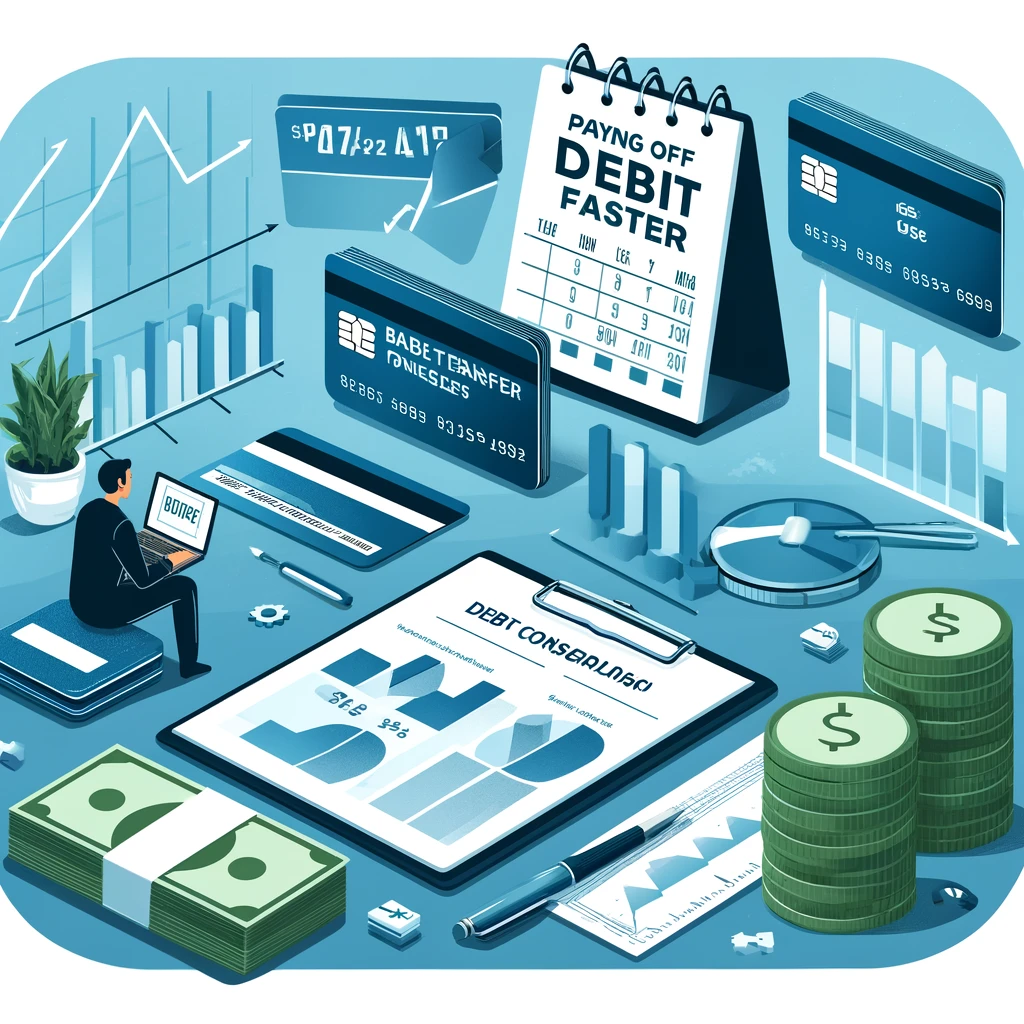Debt can be a significant burden, affecting not only your financial stability but also your mental well-being. Whether it’s credit card debt, student loans, or personal loans, finding effective ways to pay off debt faster is a crucial step towards achieving financial freedom. As we move into 2024, it’s essential to explore and adopt strategies that can help you eliminate debt efficiently. This comprehensive guide will provide you with actionable tips and tools to help you become debt-free.
Understanding Your Debt
The first step in tackling debt is understanding the full scope of what you owe. Make a list of all your debts, including the creditor, total amount owed, interest rate, and minimum monthly payment for each one. This will give you a clear picture of your financial obligations and help you prioritize which debts to pay off first.
Effective Debt Repayment Strategies
1. The Debt Snowball Method
- Overview: The debt snowball method involves paying off your smallest debts first while making minimum payments on larger debts. As each small debt is paid off, you roll the amount you were paying into the next smallest debt, creating a snowball effect.
- Benefits: This method provides quick wins and boosts motivation as you see debts eliminated one by one.
- Steps:
- List your debts from smallest to largest.
- Pay as much as possible on the smallest debt.
- Once the smallest debt is paid off, move to the next smallest debt and so on.
- Use tools like Undebt.it to create a customized debt snowball plan and track your progress.
2. The Debt Avalanche Method
- Overview: The debt avalanche method focuses on paying off debts with the highest interest rates first while making minimum payments on others. This approach minimizes the amount of interest paid over time.
- Benefits: Saves money on interest payments in the long run.
- Steps:
- List your debts from highest to lowest interest rate.
- Pay as much as possible on the debt with the highest interest rate.
- Once the highest interest debt is paid off, move to the next highest interest debt and so on.
- Use platforms like Credit Karma to monitor your interest rates and track your debt repayment progress.
3. Balance Transfer Credit Cards
- Overview: Balance transfer credit cards allow you to transfer high-interest credit card debt to a card with a lower or 0% introductory interest rate. This can significantly reduce the amount of interest you pay, helping you pay off the principal faster.
- Benefits: Lower or zero interest rates for a promotional period.
- Steps:
- Apply for a balance transfer credit card with a low or 0% introductory rate.
- Transfer your high-interest debt to the new card.
- Pay off the transferred balance within the promotional period to avoid high interest rates.
- Consider cards like the Chase Slate Edge or Citi Simplicity Card for their balance transfer offers.
4. Debt Consolidation Loans
- Overview: A debt consolidation loan combines multiple debts into a single loan with a lower interest rate. This can simplify your payments and reduce the total interest paid.
- Benefits: Lower interest rates and simplified payments.
- Steps:
- Apply for a debt consolidation loan from a bank or online lender.
- Use the loan to pay off your existing debts.
- Make monthly payments on the new loan.
- Explore lenders like SoFi or LendingClub for competitive debt consolidation loan options.
5. Increase Your Income
- Overview: Increasing your income can provide additional funds to put towards debt repayment. This can be achieved through side hustles, freelance work, or asking for a raise.
- Benefits: Faster debt repayment and improved financial stability.
- Steps:
- Identify opportunities to increase your income.
- Allocate extra earnings towards your debt repayment plan.
- Find freelance opportunities on platforms like Upwork or Fiverr to boost your income.
6. Reduce Unnecessary Expenses
- Overview: Cutting back on non-essential expenses can free up more money to pay off your debt. Review your budget and identify areas where you can save.
- Benefits: More money available for debt repayment.
- Steps:
- Track your spending to identify non-essential expenses.
- Reduce or eliminate these expenses.
- Redirect the savings towards your debt.
- Use budgeting apps like YNAB (You Need A Budget) to help manage and reduce expenses.
Maintaining Financial Discipline
Paying off debt requires discipline and commitment. Here are some additional tips to stay on track:
- Automate Payments: Set up automatic payments to ensure you never miss a due date.
- Stay Motivated: Celebrate small milestones along the way to stay motivated.
- Avoid New Debt: Resist the temptation to accumulate new debt while paying off existing debt.
Conclusion
Paying off debt faster is possible with the right strategies and tools. By understanding your debt, choosing the appropriate repayment method, and leveraging resources like balance transfer cards and debt consolidation loans, you can take control of your financial future. Start implementing these strategies today to achieve financial freedom and peace of mind in 2024.



